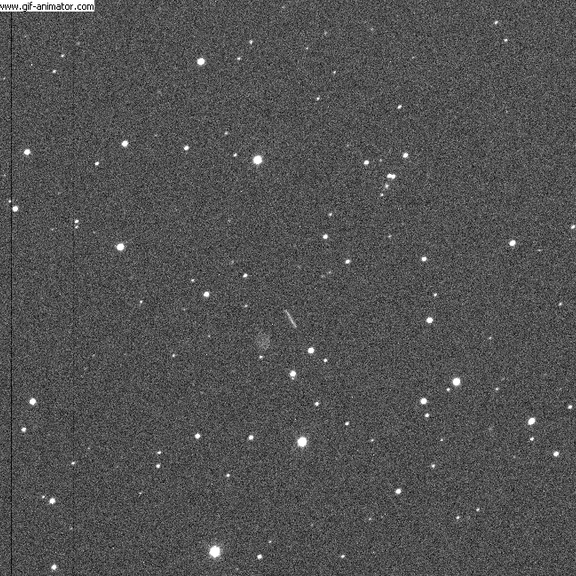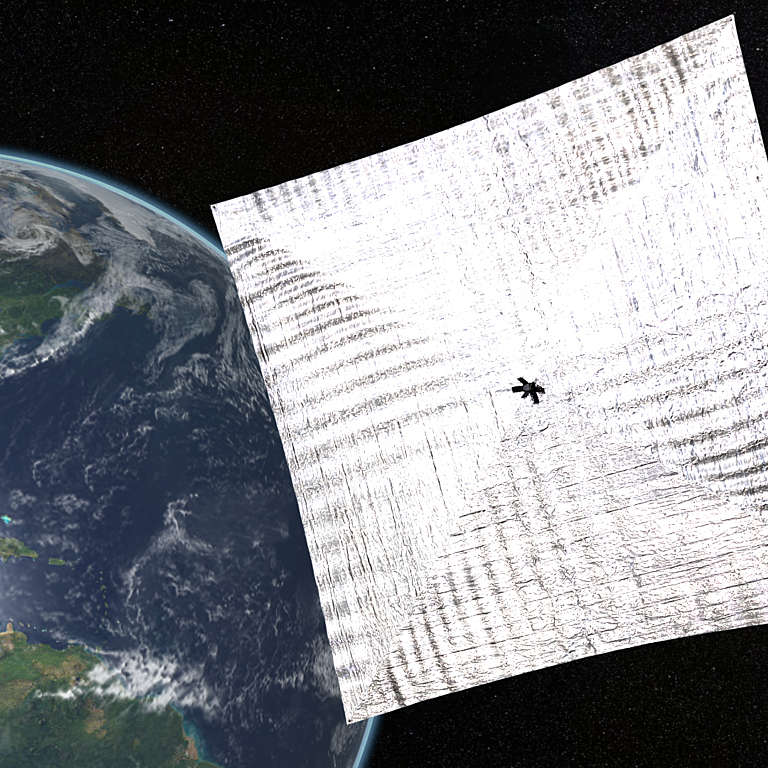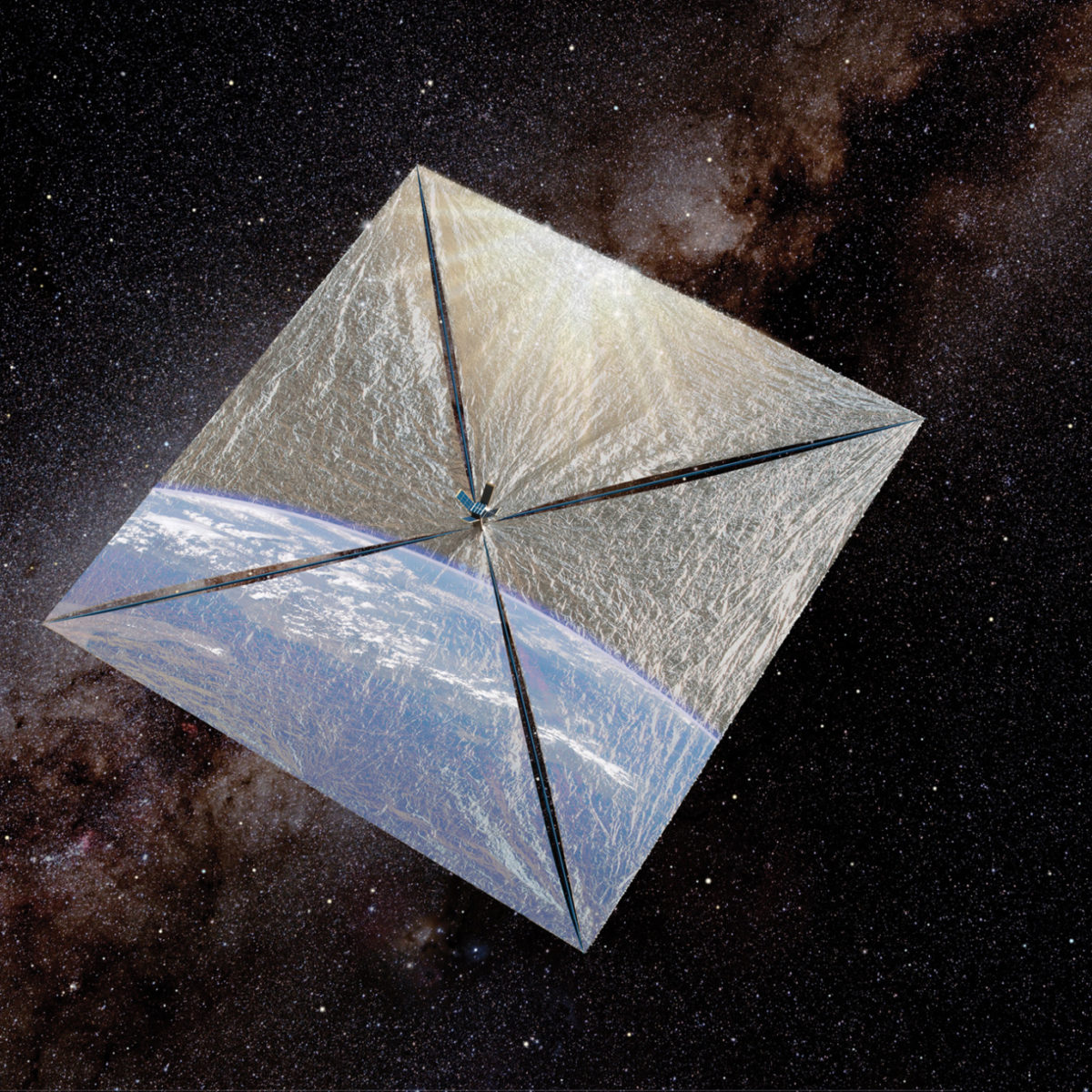All
All
Stories, updates, insights, and original analysis from The Planetary Society.
The 2009 Gene Shoemaker NEO Grant Recipients
In 2009, The Planetary Society awarded $18,300 as part of its Gene Shoemaker Near Earth Object (NEO) Grant Program. The grants were made to a group of international researchers to find, track, and characterize potentially hazardous NEOs.
Updates from the IAA Planetary Defense Conference
Updates from the IAA Planetary Defense Conference
More from the Planetary Defense Conference: Shoemaker Grant Winners
More from the Planetary Defense Conference: Shoemaker Grant Winners
Updates on the 2007 Shoemaker NEO Grant Recipients (27 April 2009)
Our 2007 Shoemaker NEO Grant winners have been extremely busy over the past two years. Take for example Quanzhi Ye of Guangzhou, China: He was only 18 when he received the award but already the principal investigator of the sky survey at the Lulin Observatory in Taiwan.
Solar Sail Update: New Opportunities
At the beginning of this decade, we designed a mission to accomplish this goal. We launched Cosmos 1 in June 2005, but the Volna rocket that was to place the spacecraft in orbit failed, and we were never able to test our solar sail in flight. These days, The Planetary Society is working with colleagues at NASA and at the Russian Space Research Institute to put together a new solar sail mission.
Updates on the 2007 Shoemaker NEO Grant Recipients (27 June 2008)
Amateur astronomers play a critical role in retiring the risk of impact from near-Earth objects. When the Shoemaker NEO Grant program began in 1997, the focus was on finding previously undiscovered objects one kilometer in diameter and larger. Thanks to professional NEO survey programs like LINEAR (the Lincoln Near-Earth Asteroid Research program run by MIT’s Lincoln Laboratories) and the Catalina Sky Survey (run from the University of Arizona’s Lunar and Planetary Laboratory), the goal of discovering the vast majority of large NEOs is within reach, and the focus of the Shoemaker NEO Grant Program has shifted to astrometric follow-up and physical studies.
Mars Climate Sounder Collects 20 Millionth Sounding
Last week Mars Climate Sounder collected its 20 millionth sounding at Mars. Mars Climate Sounder is scanning without problems, collecting science observations of the atmosphere of Mars. Mars Climate Sounder has now been observing Mars for over 17 months (three quarters of a Mars year and also approximately three quarters of the Mars Reconnaissance Orbiter primary science mission).
Planetary Society's Optical SETI Telescope Offers Online View of Night sky
The Planetary Society's Optical SETI Telescope was built solely to search for possible light signals from alien civilizations. Located at Oak Ridge Observatory in Harvard, Massachusetts, it is the first dedicated Optical SETI telescope in the world. Its 72-inch primary mirror also makes it larger than any optical telescope in the U.S. east of the Mississippi river.
Millions of soundings yield clues to Mars' weather
Two months after the start of Mars Reconnaissance Orbiter's primary science phase, the Mars Climate Sounder instrument has already acquired more than four million soundings, building toward a vast data set on the three-dimensional structure of Mars' atmosphere over the full Martian year of the orbiter's nominal mission.
The 2007 Gene Shoemaker NEO Grant Recipients
In 2007, The Planetary Society awarded $34,500 as part of its Gene Shoemaker Near Earth Object (NEO) Grant Program. The grants were made to a group of international researchers to find, track, and characterize potentially hazardous NEOs.
Updates from Past Recipients of the Shoemaker NEO Grants (1 March 2007)
Thanks to The Planetary Society Shoemaker Grant, the 1.06-meter KLENOT telescope optics was completed at the Klet Observatory. Regular observations of the KLENOT project started in March 2002 under the new IAU/MPC code 246, so we can now present results covering 5 years of this work.
Updates from Past Recipients of the Shoemaker NEO Grants (18 July 2006)
Using the Shoemaker NEO Grant funds, Minor Planet Research has purchased a 1.7-terabyte data server for our Asteroid Discovery Station (ADS) education outreach program Through the generosity of Dr. Philip Christensen, this server is housed at the Mars Space Flight Facility (MSFF) at Arizona State University in Tempe, Arizona.
Telescope shows its Amazing Capabilities
During a few observation sessions in late April, the new Optical SETI Telescope was already demonstrating its amazing capabilities. Over three nights, the telescope completed 17 hours of observation, under the direction of Paul Horowitz and his team of Harvard graduate students. During that time, the telescope observed 1% of the sky, looking for the briefest flashes of light coming from outer space.
The Planetary Society Optical SETI Telescope Opens
On April 11, 2006, a new era dawned in the search for extraterrestrial intelligence (SETI) with the dedication and beginning of operations of The Planetary Society Optical SETI Telescope in Harvard, Massachusetts. It is the first devoted optical SETI telescope in the world. The telescope was constructed by Paul Horowitz and his group at Harvard University using funding from Planetary Society members.
Updates from Past Recipients of the Shoemaker NEO Grants (17 August 2005)
Following last year's Potentially Hazardous Asteroid and a few other non-main-belt discoveries, I looked into what improvements I could make to more efficiently image the sky. The major advance involved the design of a 3-lens corrector comprising 2 stock lenses and a custom lens I made myself.
The 2005 Gene Shoemaker NEO Grant Recipients
In 2005, The Planetary Society awarded $32,500 as part of its Gene Shoemaker Near Earth Object (NEO) Grant Program. The grants were made to a group of international researchers to find, track, and characterize potentially hazardous NEOs.
The Launch of Cosmos 1: Live Reports
In the past twenty-four hours, the Russian space agency (RKA) has made a tentative conclusion that the Volna rocket carrying Cosmos 1 failed during the firing of the first stage. This would mean that Cosmos 1 is lost.
Updates from Past Recipients of the Shoemaker NEO Grants (16 April 2004)
2003 was a good year with 50,779 asteroid astrometric observations submitted, including known NEOs and the discovery of a new Aten-class object, 2003 UY12. Based upon the volume of astrometric observations submitted, observatory code 683 was the world's eighth most productive asteroid astrometry station.
Updates from Past Recipients of the Shoemaker NEO Grants (20 March 2001)
I just wanted to express my appreciation again to The Planetary Society for the Shoemaker Grant. Apogee Instruments delivered the AP6Ep purchased with the grant on 9 March 2001. Critical mass on all of the other components associated with implementing the proposal was reached last week.


 Explore Worlds
Explore Worlds Find Life
Find Life Defend Earth
Defend Earth


 Sun
Sun Mercury
Mercury Venus
Venus Earth
Earth Mars
Mars Jupiter
Jupiter Saturn
Saturn Uranus
Uranus Neptune
Neptune Small Bodies
Small Bodies





